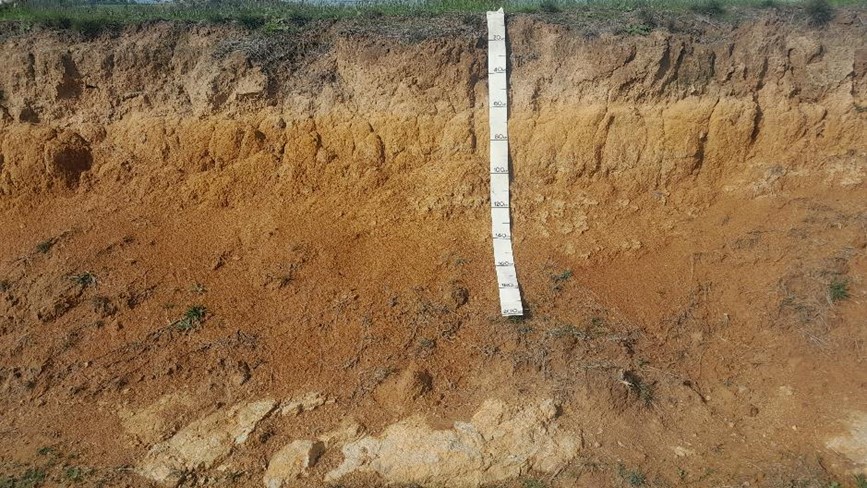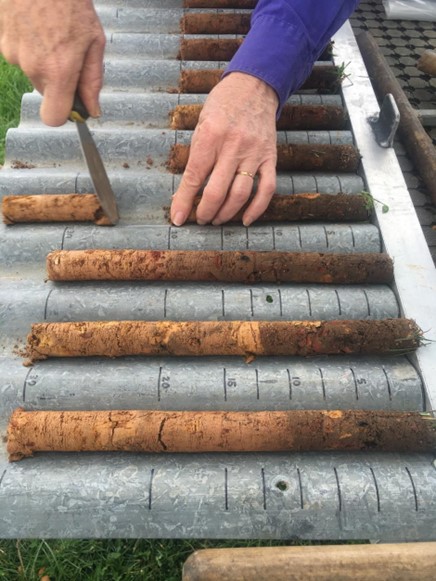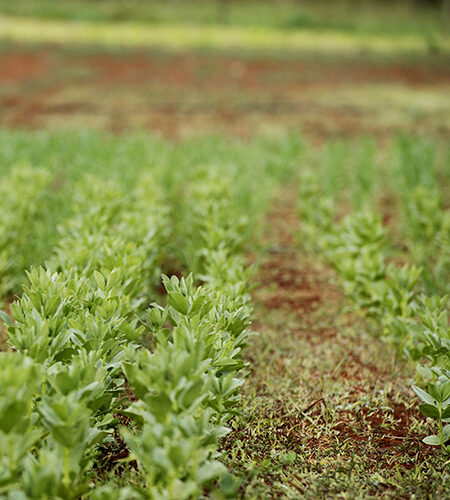This fact sheet supports the ‘Opportunities for soil carbon management in the South West Slopes’ webinar, delivered as part of the ‘Soil carbon capacity building resources for farmers and advisors’ project, proudly supported by the NSW Department of Climate Change, Energy, the Environment and Water (DCCEEW).
In this webinar, Dr Cassandra Schefe, AgriSci, and Dr Karl Andersson, NSW Department of Primary Industries and Regional Development (NSW DPIRD), explore:
- what soil carbon levels can be expected
- what factors influence soil carbon
- what management practices can be used to increase soil carbon level.

Key take home messages
- As soil organic carbon (SOC) levels are closely aligned with rainfall, soil type and management, manage expectations around soil carbon levels, with all systems having an upper limit of sustainable carbon levels.
- SOC levels increase with increasing rainfall until about 1000 mm rainfall, which aligns with increasing plant growth, with most of this increase in the top 0-10 cm.
- Soil type is important, with clay soil being able to hold more carbon due to a range of mechanisms by which clay prevents microbial and non-microbial breakdown of organic carbon.
- Most soil carbon is derived from decomposing plant material and soil flora and fauna. Therefore, the most effective way to build soil carbon is to improve plant growth through identifying and managing soil constraints and nutritional issues.
- In the Holbrook region of NSW, the most limiting constraint to plant growth is soil acidity. Managing acidity through regular soil testing and an effective liming program will optimise plant growth and microbial function.
Factors influencing soil carbon levels
- Soil type and condition: clay soils can ‘hold’ more carbon as reactive minerals protect carbon from microbial accessibility, directly and via aggregation. Address key soil limitations before focussing on soil carbon accrual, as plant growth will only increase once soil constraints have been addressed.
- Biomass inputs: increases in soil carbon require extra increases in organic inputs through plant growth or additional organic amendments. Maintaining these higher levels will require the additional inputs to continue. If the inputs are reduced, soil carbon values may decrease again.
- Temperature: Warmer temperatures can accelerate plant growth but also the decomposition of organic matter, leading to a faster release of carbon dioxide (CO₂) back into the atmosphere. Conversely, cooler temperatures slow down decomposition, allowing more carbon to be stored in the soil.
- Extreme weather events: droughts and floods may remove ground cover and disrupt soil structure leading to the loss of soil carbon.
- Rainfall: soil carbon increases are strongly aligned with periods of increased rainfall, with the potential for carbon values to decrease during drought periods. This is also aligned with long-term rainfall patterns, with average soil organic carbon levels increasing with increasing rainfall until about 1000 mm rainfall. This aligns with increasing plant growth, with most of this increase in the top 0-10 cm.
Note: Each soil has a stable carbon storage capacity – not an ongoing linear increase, so manage expectations around potential increases.
Management practices that can increase soil carbon levels
Manage soil constraints: soil constraints such as soil pH, salinity, sodicity/dispersion, compaction and drainage/waterlogging impair plant growth and microbial function and should be amended where possible. Once constraints are addressed, plant growth and microbial function will increase, with production benefits potentially improving soil stable carbon content. Soil acidity (low pH) is a key constraint in the South West Slopes region of NSW. Recent research in the region suggests that traditional lime application rates are not addressing current soil acidification rates, and an effective liming program should aim to maintain a target pH (CaCl₂) of 5.8 in the top 10 cm to increase pH in the surface and subsoil (Condon et al., 2024).
Adequate soil fertility: long-term research in Australia and internationally has demonstrated that soil carbon levels will increase if levels of other nutrients are adequate and meeting plant demand. In the Holbrook region, nutrients such as phosphorus, nitrogen, sulphur and potassium can be deficient.
Note: an effective soil testing program is needed to monitor and manage soil constraints and soil fertility to ensure plant nutrient demand is met.
Grazing management: while recent research has demonstrated that grazing management has no significant long-term impact on soil carbon levels (McDonald et al., 2023), overgrazing can lead to topsoil erosion which negatively impacts soil fertility, soil carbon and plant growth.
Soil carbon levels in our region
The Cool Soils Initiative project measured a range of soil carbon values in cropping paddocks in southern NSW of between 0.7% and 4.5%. In the Holbrook region, the median was 1.55% (0-10 cm soil layer).
Holbrook Landcare Network (HLN) has a collection of 40 long-term soil monitoring sites in various pasture paddocks across the region. The paddocks consist of various pasture species, mixes, and management history. Table 1 shows the mean levels, and the ranges (shown in brackets) expected in each rainfall zone. The range in each zone is large, reflecting differences in pastures and management. There is some overlap between zones, particularly between the 600-800 mm and the >800 mm zones. Across all rainfall zones the highest recorded SOC was 2.92% in a phalaris/subclover pasture paddock near Tumbarumba, and the lowest was 0.59% in a recently established lucerne paddock near Mangoplah.
Table 1. Mean SOC% for HLN’s long-term soil monitoring sites
| Rainfall zone | Mean SOC % at 0-30 cm soil depth |
|---|---|
| <600 mm (n = 7) | 0.77 (0.59-1.00) |
| 600-800 mm (n = 21) | 1.34 (0.86-2.55) |
| >800 mm (n = 12) | 1.69 (1.18-2.92) |

Figure 2. Soil cores sampled from a long-term monitoring site of improved pasture of ryegrass/subclover/phalaris in the South West Slopes region.
The darker soil layers show the depth and extent of organic rich soil (2.33% SOC on average at 0-30 cm depth) typically found in the high rainfall zone (>800 mm annual rainfall).
The farmer applied 8 t/ha of lime split across 3 applications since 2017 to achieve a target pH (CaCl₂) of 5.8 in the top 10 cm.
Soil type is a Brown Kurosol (acidic soils with an abrupt increase in clay) developed from shale and other metasedimentary rocks (Source: Holbrook Landcare Network).

Prepared by the Soil CRC and their participants as part of the ‘Soil Carbon Capacity Building Resources for Farmers and Advisors’ project, proudly supported by NSW DCCEEW.


